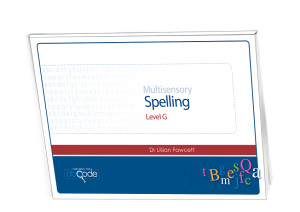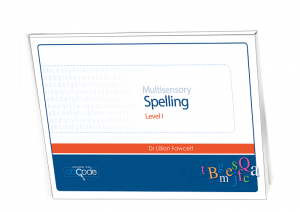
Which is the BEST program to help improve spelling?
It is strongly recommend that spelling is NOT done in isolation but in conjunction with a systematic phonic-based program. An integral part of the spelling program is firstly identifying the sounds in a word and then learning the letter(s) representing those sounds. If students do not have a good phonic knowledge, it will make the learning to spell process more difficulty. Remember, it is not about learning to spell one particular word ‘by sight’ but understanding how a word has been coded and then applying that knowledge across to other words with a similar spelling pattern. This also means that students need to be systematically taught spelling rules.
For help in determining your child’s spelling level go to: Start Here
To view the spelling books Click Here
Click on the level for more information about each program.
SPELLING AGE SCORED ON SPELLING TEST | |||
|
<5½yrs |
5yrs-8yrs |
8yrs-14½yrs | |
|
Level 1 Reading Program |  | ||
|
Level 2A Reading Program |  |  | |
|
|  |  | |
THE THEORY
Learning to Spell
According to Frith’s (as cited in Heath, Hogben, & Tan, 2008) literacy acquisition model, there are three levels in spelling acquisition: The logographic phase, the alphabetic phase and the orthographic phase. In the logographic phase students focus on the appearance of words and learn whole words as single units. This is not a particularly good long-term strategy (particularly if you have dyslexia) as you have to have seen and remembered a word in order to be able to spell and read it correctly.
The next stage in the alphabetic phase. This has two sub-components. The first is having good phonological awareness and auditory processing skills. Phonological awareness is the ability to identify and manipulate the sounds in speech. There is a long history of research which show students’ phonological awareness and auditory processing skills in pre-primary are a good indicator of their future success in reading and spelling (see for example, McNamara , Scissons, & Gutknecth, 2011). In fact, it is a common area of weakness for students with dyslexia and is one of the skills assessed when diagnosing dyslexia. The second component of the alphabet phase is learning the alphabetic code (i.e., phonics). Again, there is a large body of research which consistently demonstrates that the systematic teaching of phonics is the most beneficial strategy for students struggling with literacy (see for example, Al Otaiba et al., 2010).
The orthographic phase includes learning about root words, prefixes, suffixes, syllabification and the Spelling Rules. The importance of this knowledge is highlighted in Holmes and Quinn’s (2009) study of university students who were poor spellers. They found that these students were not particularly good at identifying or using orthographic knowledge. Orthographic knowledge is particularly important in learning English due to the complexity of the language.
Cracking the ABC Code is an effective program for teaching spelling as it incorporates all of these components.
Unique Spelling Technique
Contrary to popular belief good readers do not necessarily become good spellers. The Cracking the ABC Code Multisensory Spelling programs are based on a unique technique that teaches the ‘spelling code’ by helping students identify the letter or letter combinations that are used to represent each sound in the word. The process utilises students’ sense of sight, hearing and touch. It has been found to be very successful, yet takes very little time to complete. In addition, it focuses students’ attention on the orthographic components of the word. Click here to learn more and to watch a demonstration of this unique way of learning to spell.
Editing
Editing exercises are an effective way for students to apply and practise their spelling, spelling rules and grammar knowledge. The Cracking the ABC Code Editing books come in four levels. Each level links to a Cracking the ABC Code Multisensory Reading program. However, the books can also be used in isolation.
References
Al Otaiba, S., Puranik, C., Rouby, D., Greulich, L., Sidler, J., et al. (2010). Predicting kindergarteners’ end-of-year spelling ability based on their reading, alphabetic, vocabulary, and phonological awareness skills, as well as prior literacy experiences. Learning Disability Quarterly, 33(3), 171-183.
Heath, S., Hogben, J., & Tan. V. (2008). Assisting students struggling with spelling. Dyslexia-SPELD Bulletin. 40, 5-7.
Holmes, V., & Quinn, l. (2009) Unexpectedly Poor Spelling and Phonological-Processing Skill. Scientific Studies of Reading.13, 295-310.
McNamara , J.K., M., & Gutknecth, N. (2011). A longitudinal study of kindergarten children at risk for reading disabilities: The poor really are getting poorer. Journal of Learning Disabilities , 44 (5), 421-430.

Click on the images to purchase. Note: ‘For spelling age’ refers to the student’s current spelling age. If a student’s spelling age is 8 years, the most appropriate book would be the Multisensory Spelling Level G book.

























